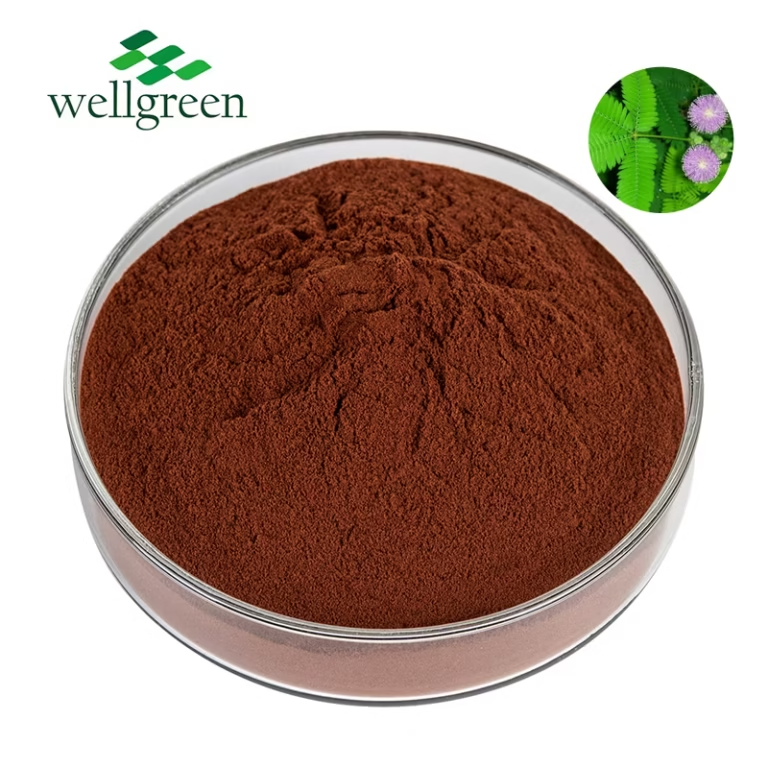Mimosa Hostilis: A Sacred Plant for Indigenous Cultures
Wiki Article

Mimosa hostilis is a venerable plant deeply ingrained in the traditions of many Indigenous cultures across South America. For centuries, it has been utilized by indigenous communities for its comprehensive spiritual and medicinal properties. The root bark, known as ayahuasca, is particularly revered for its hallucinogenic effects, believed to unveil profound visions that facilitate healing.
Through traditions, the plant spirit of Mimosa hostilis is invoked, guiding individuals on a path of self-discovery and reconciliation with their inner selves. The knowledge concerning this sacred plant has been shared through generations, preserving the rich cultural heritage and wisdom of these communities.
Delving into MHRB Extract: The Mysteries of Mimosa Hostilis
Mimosa hostilis, a tropical plant indigenous to the Americas, has captured the attention of both traditional healers for centuries. This fascinating species harbors within its roots a potent compound known as MHRB, which has gained significant popularity in recent times.
MHRB extract is celebrated for its benefits, often associated with spiritual exploration. Ancient practices suggest a long history of MHRB use in ceremonial rituals.
- Experts continue to investigate the chemical constituents of MHRB, seeking to illuminate its full depth of effects.
- The nuances surrounding MHRB usage require awareness. It is vital to seek guidance from knowledgeable individuals before experimenting with any practices involving this powerful compound.
Exploring the Ethnobotanical Uses of Mimosa tenuiflora
Mimosa tenuiflora, commonly acknowledged as "sacred mimosa", holds a significant position within the ethnobotany knowledge of diverse communities. Its versatile properties have been explored for centuries in traditional medicinal practices, as well as in sacred ceremonies. The leaves of this remarkable plant possess a rich array of bioactive chemicals believed to exhibit therapeutic effects.
From treating ailments like wound infections to boosting spiritual connection, Mimosa tenuiflora has long been revered for its profound impact on human health.
Mimosa Hostilis Root Bark Chemistry and Pharmacology
Mimosa hostilis root bark contains a complex chemical profile, primarily known for its significant concentrations of alkaloids. Among these, dimethyltryptamine (copyright) and THH are particularly noteworthy. These molecules possess a range of pharmacological activities, including hallucinogenic effects. The bark furthermore diverse alkaloids, such as harmine, which may contribute to its comprehensive pharmacological profile.
The traditional employments of Mimosa hostilis root bark span a spectrum of therapeutic purposes, particularly in South American communities. However, it is crucial to understand that scientific research on the efficacy of these uses remains scarce.
Tapping into the Power of copyright with Mimosa Hostilis
Mimosa hostilis, a tree native to South America, has captured the attention of researchers and individuals alike for its potent compounds, particularly dimethyltryptamine, or copyright. copyright is a powerful psychoactive substance known for producing intense visuals. By ingesting the bark of Mimosa hostilis, one can journey into the realms of copyright-induced experiences. It is important to remember that copyright is a strong substance and should be treated with reverence.
- Ethical use is paramount, and seeking guidance from experienced individuals or knowledgeable sources is highly recommended.
- The journey of copyright can be both transformative but also potentially challenging. It is important to prepare both mentally and physically for the outcomes that may arise.
copyright from Mimosa hostilis provides a unique opportunity to delve into the depths of consciousness, potentially leading to existential growth and insight.
Ethical considerations Using Mimosa Hostilis
The utilization of Mimosa hostilis for traditional purposes raises a myriad of philosophical questions. While some argue that its sacred significance warrants respect and tolerance, others oppose its use due to potential unforeseen consequences. It's crucial to consider this complex issue with care, taking into account the cultural contexts and potential side effects. A balanced perspective is essential read more for navigating the ethical terrain surrounding Mimosa hostilis.
Cultivating Mimosa Hostilis: A Guide for Growers
Embarking on the journey of cultivating Mimosa Hostilis can be a gratifying experience for the dedicated grower. This intriguing plant, indigenous to tropical regions of the Americas, has gained significant attention in recent years due to its unique properties. Upon embarking on your cultivation endeavor, it is crucial to grasp the specific requirements this plant demands to thrive.
- Guaranteeing adequate sunlight is paramount for healthy Mimosa Hostilis growth. These plants thrive in direct sunlight, ideally receiving a minimum of six hours per day.
- Ensuring well-drained soil is essential to prevent root rot, a common ailment that can ruin your plants. A mixture of loamy soil with organic matter is perfect.
- Regular watering is necessary, but be mindful not to overwater your Mimosa Hostilis. Allow the top inch of soil to harden before providing another irrigation.
The Shamanic Traditions Surrounding Mimosa Hostilis
Deep within the timeless forests of South America, the spiritplants of transformation have been honored for generations. Among these powerful allies is Mimosa Hostilis, a sacred plant revered by the shamanic traditions of indigenoustribes. It contains within its bark a river of knowledge, guiding seekers on their journeys into the spirit realm.
The medicine men understand that Mimosa Hostilis is not simply a medicinal agent; it is a bridge between realms, connecting us to the powerful energies that sustain all of creation.
Confronting Legal Challenges with Mimosa Hostilis
The legal status of mimosa hostilis can be from one country to another. It means that the legality of possessing, using, or raising this plant revolves around your exact area.
Furthermore, laws and regulations concerning mimosa hostilis are constantly changing. It is therefore essential that you thoroughly research the specific legal framework in your area.
- Seeking advice from a legal professional who specializes in cannabis laws is highly suggested.
- Remaining informed about any updates to the law can help you stay clear of any potential legal issues.
Mimosa Hostilis and Spiritual Exploration: A Journey Inward deepening
The ancient wisdom whispered through the rustling leaves of Mimosa Hostilis calls to voyagers on a sacred quest. Venturing upon this path is to unleash hidden dimensions within, where the veil between worlds blurs. It's a transformative experience that illuminates the soul, revealing truths sleeping beneath the surface. As you blend with the essence of this sacred plant, be prepared for visions that reshape your understanding.
- Embrace the unknown with an open heart and a curious mind.
- Surrender all expectations and allow yourself to be carried by the rhythm.
- Remember, this is a quest of self-discovery. Trust in your own inner compass.
The wisdom gained through Mimosa Hostilis resonates long after the experience has passed. It is a blessing that can alter your life in profound and permanent ways.
Understanding the Challenges and Rewards of Mimosa Hostilis
Mimosa hostilis is a plant native to South America, gaining increasing attention for its potential pharmacological properties. While it contains valuable compounds like copyright, responsible for its psychoactive effects, it's crucial to approach this plant with caution. Understanding both the hazards and the benefits of Mimosa hostilis is essential for safe and informed use. Potential risks can include psychological distress, emphasizing the need for thorough research, responsible consumption, and a controlled environment.
- It's important to consult with a healthcare professional before using Mimosa hostilis or any products derived from it.
- Proper dosage is crucial to minimize potential risks.
- Be aware of the regulations surrounding Mimosa hostilis in your locality.
- Always prioritize safety and well-being when exploring the use of this plant.
 Report this wiki page
Report this wiki page